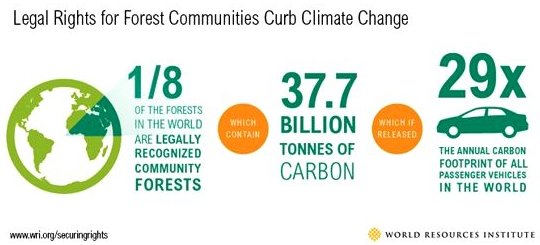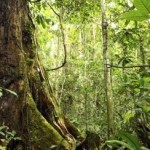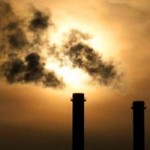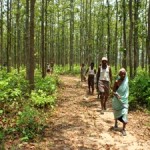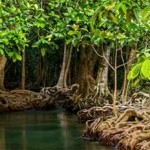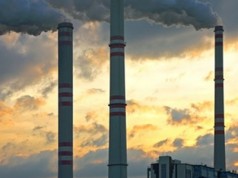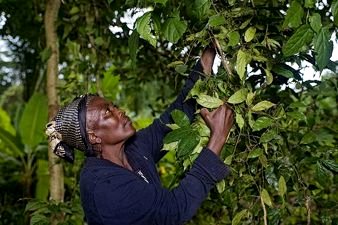
Washington – Strengthening community forest rights is an essential strategy to reduce billions of tonnes of carbon emissions, making it an effective way for governments to meet climate goals, safeguard forests and protect the livelihoods of their citizens, according to a major new report.
The report, called “Securing Rights, Combating Climate Change: How Strengthening Community Forest Rights Mitigates Climate Change”, is being published jointly by World Resources Institute (WRI) and Rights and Resources Initiative (RRI). The paper provides the most comprehensive analysis to date linking legal recognition and government protection of community forest rights with reductions in carbon pollution.
“This golden opportunity to address climate change is staring us right in the face. With at least 37 billion tonnes of carbon safely stored in community forests around the world, strengthening community rights is good for the climate and good for people,” said Dr. Andrew Steer, President & CEO, WRI. “Every head of government, minister and climate negotiator should pay attention to this important, if often overlooked, strategy to address climate change. It’s an approach to climate action that should be right up there with REDD+ or increasing energy efficiency.”
The report finds that rural communities and indigenous peoples across the world have government-recognized rights to forests containing 37.7 billion tonnes of carbon – equivalent to 29 times the annual emissions from all passenger vehicles in the world. In total, deforestation and other land uses represents 11 percent of global carbon dioxide emissions.
Using new high-resolution mapping data, the authors analyzed 14 heavily-forested countries, including Brazil, Indonesia and Colombia, and found that when governments enhanced and enforced forest rights, communities were more successful at stopping loggers, extractive companies, and settlers from illegally destroying the forests and releasing carbon pollution into the atmosphere.
In Brazil alone, the report finds, strong legal rights could contribute to preventing 27.2 million hectares of deforestation by 2050, translating to 12 billion tonnes of avoided carbon dioxide emissions – the same as about three years’ worth of carbon dioxide emissions from all Latin American and Caribbean countries.
Indeed, the study reveals that deforestation rates inside community forests are dramatically lower than in forests outside those areas. For example:
- In a part of the Mexican Yucatán, it is 350 times lower;
- In the Guatemalan Petén, it is 20 times lower;
- In the Brazilian Amazon, it is 11 times lower; and
- In the Bolivian Amazon, it is 6 times lower.
“No one has a stronger interest in the health of forests than the communities that depend on them for their livelihoods and culture,” said Andy White, Coordinator of RRI. “Research has shown time and time again that clear and secure property rights for indigenous peoples and local communities have greatly boosted the capacity of countries to achieve national-level forest protection and restoration. It’s tragic that this has not yet been fully adopted as a central climate change mitigation strategy. For us to get serious about curbing climate change, we have to get serious about respecting the rights of local communities to the lands they live and depend on.”
The analysis finds that governments can implement five key recommendations to maximize the climate mitigation potential from community forests:
- Provide communities with legal recognition of rights to their forests;
- Enforce community forest rights such as mapping boundaries and expelling trespassers;
- Provide technical assistance and training to forest communities to improve sustainable forest use and market access;
- Engage forest communities in decision-making on investments affecting their forest; and
- Compensate communities for the climate and other benefits provided by their forest.

